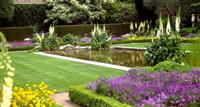
Find Out What Makes a Well Constructed Garden
We are all familiar with gardens and other manmade landscapes, but many people do not have the knowledge to fully understand how to create the different components of these different landscapes. As well as choosing appropriate plants to meet the local climate and soil conditions landscaping is concerned with design and construction.
Get to grips with landscaping
Take this course to find out about recording pre-planning information on site, how some different garden styles are created, how to make landscape drawings, what goes into making walls and hard landscape surfaces, how to add garden features to designs, how to make small spaces seem larger, lending from the surrounding landscape, and how to design small and large landscapes.
In this course you will learn to:
- Draw landscape plans
- Understand the fundamentals of landscape design
- Design gardens or parks
- Understand the fundamentals of landscape construction
Great for those:
- Working in the industry
- Looking to work in the industry
- Wanting to become landscape designers
- Working in garden centres
ACS student comment: "[The course] gave me an insight into a subject that I have been interested in for a long time. Plus it has helped me in my current job with a local landscape/nursery company. [The structure] was done in a way which was very easy to understand and this helped when you hit a subject which was hard to get a grip with. All feedback from the tutors was very constructive and helpful. David Painter, UK, Landscaping 1 course.
COURSE STRUCTURE
The ten lessons are as follows:
1. Basic Design Procedure A
- Scope of Landscaping
- Dynamic Nature of Gardens
- Plant Naming
- Plant Identification and Selection
- Botanical Families; a basis for identification
- Principles of Landscaping
- Design Elements
- Design Effects
- Climate, Micro climate and Aspect
- Collecting pre-planning information
2. History of Gardening
- Formal Gardens
- Informal Gardens
- Natural Gardens
- Cottage Gardens
- Other garden styles and themes, oriental, Mediterranean, etc
- Potted History of Gardens: Roman, Chinese, Dark Ages, Le Notre, Brown, Jeckyll, etc
3. Draughting and Contracting
- Concept Plans
- Scale Drawing
- Presentation Plan
- Computer Aided Design
- Drawing techniques (Graphics)
- Design Procedure
- Specifications and Contracts
4. Basic Landscape Construction
- Drainage and Erosion
- Gradients
- Walling
- Rockeries
- Steps
- Creating Mounds
- Earth Shaping
- Play structures
- Gravel and Paths
5. Surfacings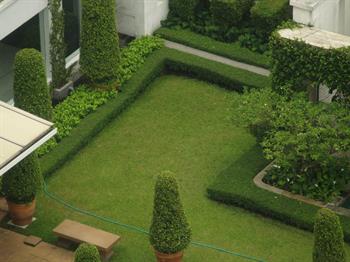
- Gradients
- Surfacings
- Gravel
- Soft Surfacing
- Grass
- Concrete
- Asphalt
- Timber
- Paving
- Rubbers and Textiles
- Substrates
- Performance Considerations
6. Furnishings and Features
- Criteria for selecting Structural Components
- Garden Furniture and Garden Rooms
- Using Furniture in the Garden
- Outdoor Tables and Chairs
- Garden Art; types, selection, use
- Lighting
- Design considerations for Play Structures
- Water Displays and Fountains
- Skate Facilities
7. Park Design A
- Park Components
- Ornaments
- Walls, Fences and Windbreaks
- Enclosed Gardens
- Gates and Gateways
- Windbreaks
- Recreational Landscaping
- Criteria for Public Outdoor Space Design
- Why Parks are Under used
- Types of Playgrounds
- Making Community Participation Work
8. Home Garden Design
- Components of a Home Garden
- Where Garden Meets House
- Bringing the Outside In
- Buildings in a Home Garden
- Courtyards
9. Design Procedure B 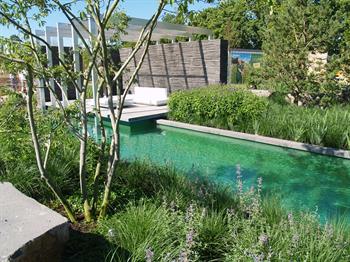
- The Design Process
- Design Elements
- Components of a Recreational Landscape
- Designing Narrow Gardens
- Water Garden Design
- Water Effects: sound, reflection, movement, light, cooling
- Using Water Plants
- Formal and Informal Pools
10. Park Design B
- Creating Trails
- Planning a Trail
- Types of Trails: Fitness, Nature, Sensory, Cryptic Puzzle, etc
- Sporting Facilities
- Outdoor Courts
- Fun and Fitness Trails
- Motor Vehicles in Parks
- Plus A Special Assignment - comprehensive landscape
AIMS
On successful completion of the course you should be able to do the following:
- Create visual effects through the use of different landscape design concepts.
- Determine pre-planning information required to prepare a landscape design.
- Determine an appropriate garden style for a landscape, to satisfy specifications for a design project.
- Illustrate a landscape design through a plan, using legible graphic skills.
- Determine different hard landscape features, including earthworks, surface treatments and furniture, to incorporate in a landscape.
- Prepare planting designs for different landscapes.
- Design different types of landscapes, including domestic gardens and public parks
WHAT IS LANDSCAPE DESIGN
Landscape Design is a multifaceted skill. It allows you to take a vision or "feeling" and transform it into a workable plan. It isn't just making a place look nice, nor mass planting, but is also about suiting the landscape to the climate, land and setting that you have to work with. An understanding of plants, soils, timbers, climate, and other landscape materials are pivotal to the success of a good landscape design.
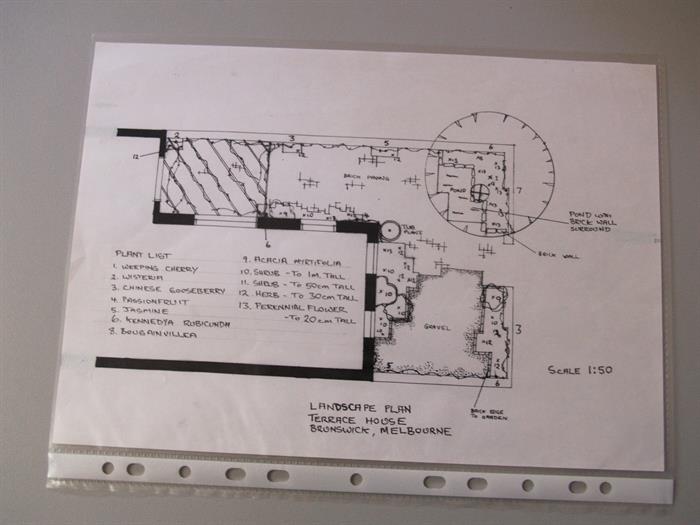
WHAT THE COURSE COVERS
You will learn a wide variety of things, through a combination of reading, interacting with tutors, undertaking research and practical tasks. Here are just some of the things you will be doing:
-Explain the complete range of principles, elements and concepts used in landscape design.
-Visit and analyse a broad range of landscape styles, themes and components.
-Perform methods utilised to develop concepts and to create affects.
-Identify, record and utilise pre-planning information for the purpose of design development, and to use a checklist as a guide for surveying a site for a proposed design.
-Perform site survey and client interview with the site owner/manager.
-Explain the significance of effective client liaison, in a specific landscape job.
-Identify historical influences on landscaping in your locality.
-Explain the influence on modern garden design, of work by three garden designers who
have been prominent in world garden history.
-Develop and compare the appropriateness of three design options for one specific landscape project.
-Draw an extensive range of different landscape symbols on paper, covering soft and hard landscape features.
-Transpose two different landscape drawings, reducing the scale by a specified amount.
-Draw a plan for a landscape, using legible graphic techniques.
-Determine site preparations required for a specified landscape site, including:
*clearing/cleaning *earthworks.
-Explain the legal requirements for cleaning up after a job in your locality.
-Determine suitable timbers for construction of four different types of garden structures.
-Compare the suitability of different materials for surfacing paths, including:
*Asphalt *Concrete *Local gravels *Local mulches *Timber *Ceramics.
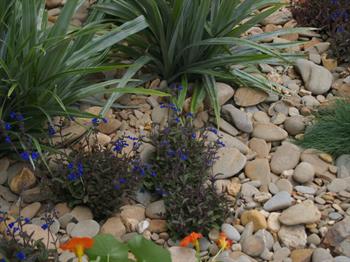
-Collect, catalogue and determine appropriate use for different items of garden furniture.
-Design a paved area for a garden surveyed, including: scale drawings and construction instructions.
-Prepare a plant collection of at least eighty different plants incorporating:
*Pressed plant specimens, Scientific and common plant names & Cultural details
*How to use each of these plants in different landscape situations uses.
-Evaluate established landscapes based in:
*Costs *Maintenance *Function *Aesthetics
-Develop detailed planting designs, including plant lists, for three landscape plans, to satisfy given job specifications.
-Analyse and compare the landscape designs of numerous selected homes and public parks.
-Develop and prepare concept plans for landscape areas such as:
*Outdoor living area *Kitchen garden *Courtyard
*Children's playground *Entry to home *Neighbourhood park
-Draft a series of four conceptual plans, showing stages in the design of a surveyed home garden.
-Prepare a professional standard landscape design for a client in your, including:
*A landscape plan drawn on tracing paper.
*Materials specifications, including types and quantities.
*Budget details.
How the payment Options Work
You can be either pay fees in one or two parts.
- If paying in 2 parts, the first part is paid on enrolment, and the second part two months later (You are sent a bill when you enrol).
- If you pay the full fee on enrolment, we offer a discounted fee (commonly around 8% lower)
What You Could Use This Course For
This course is a solid introduction to landscaping. It serves as an ideal foundation for people wishing to work in landscaping. It will not lead to a construction license but should provide basic skills needed to undertake small scale landscaping projects which do not require council approval.
It could serve as a platform for further study or be taken in conjunction with other modules to enhance your learning experience. People who should take this course are those working in or wishing to work in:
Landscape construction
Landscape design
Garden design
Garden maintenance
Garden restoration or conservation
It could also add to the skillset of people wanting to start a landscape business, or be of value to people wishing to renovate a home garden.